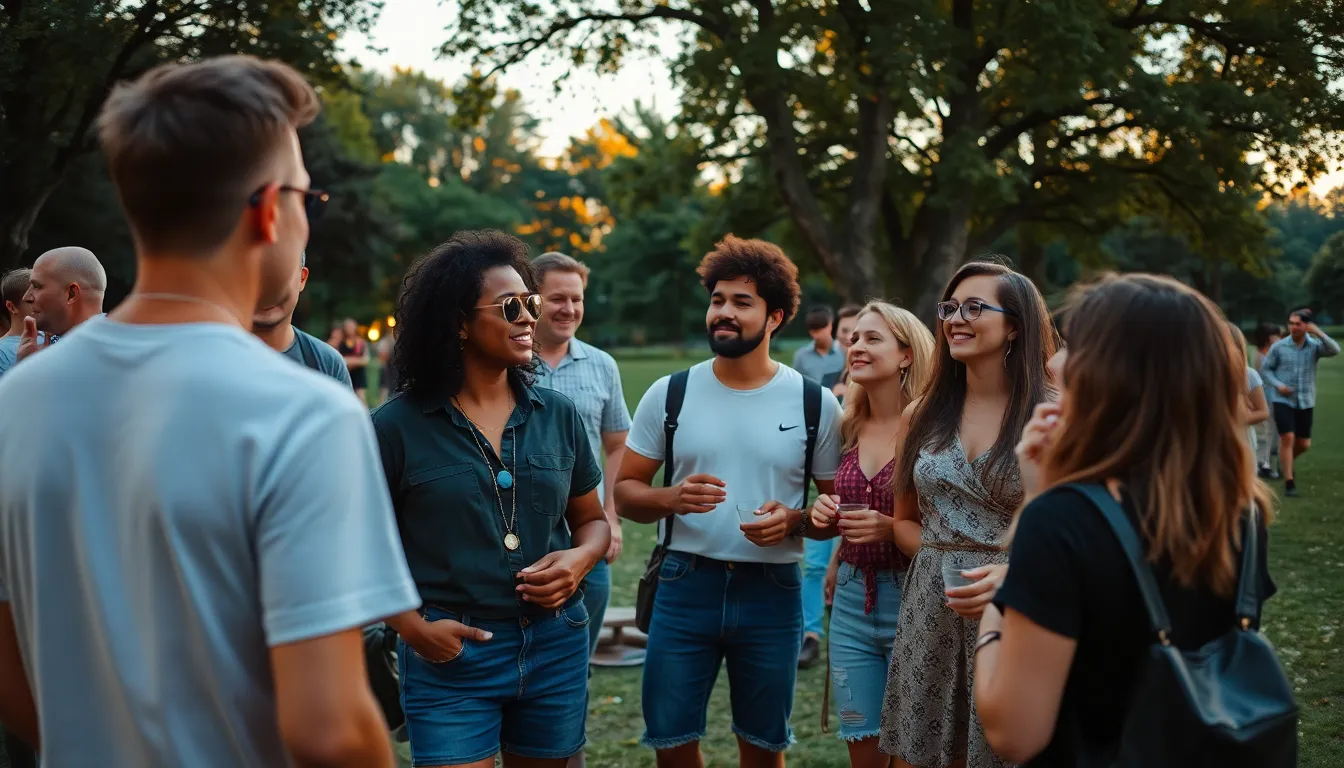Daylight Saving Time is that magical time of year when clocks spring forward and everyone pretends to love losing an hour of sleep. In 2019, this quirky ritual kicks off on March 10, giving folks an extra reason to grumble about their morning coffee. But don’t worry; it’s not all doom and gloom. With longer evenings ahead, there’s plenty of time for backyard barbecues and sunset strolls—if you can just manage to wake up on time!
Table of Contents
ToggleOverview Of Daylight Savings Time
Daylight Saving Time (DST) starts on March 10, 2019. Clocks spring forward at 2:00 AM, moving forward one hour to 3:00 AM. This change affects most states in the United States, except Hawaii and most of Arizona, which do not observe DST.
Sleep disruption occurs for many as they lose an hour overnight. Adjusting to DST can take several days for individuals’ circadian rhythms to adapt. Longer daylight hours in the evening provide opportunities for outdoor activities. Families often enjoy barbecues, walks, and other recreational activities during this time.
Historically, the United States implemented DST during World War I and again in World War II as a means to conserve energy. Research suggests that energy savings from DST are minimal. Findings indicate that the extended daylight may promote additional activities, thereby offsetting initial energy savings.
Health experts caution about the effects of time changes, linking them to an increase in heart attacks and accidents shortly after the clocks change. Staying mindful of this transition can reduce potential risks. For many, Daylight Saving Time signals the coming of spring and a chance to enjoy more sunlight during evening hours.
Key Dates In 2019

In 2019, Daylight Saving Time marked key transitions for many. These dates significantly impacted daily routines across the nation.
Spring Forward
Spring Forward occurred on March 10, 2019. At 2:00 AM, clocks jumped ahead one hour to 3:00 AM. This time change commonly disrupts sleep patterns, leaving individuals feeling groggy for several days. The adjustment affects circadian rhythms, making it important for people to gradually acclimate. Longer daylight during evenings provides opportunities for outdoor activities, enhancing social gatherings and leisure time. Research shows that many enjoy these benefits, despite the initial loss of sleep.
Fall Back
Fall Back took place on November 3, 2019. At 2:00 AM, clocks moved back one hour to 1:00 AM, restoring the hour lost in spring. While this adjustment leads to earlier sunsets, it also aligns more with natural light, benefiting those who wake early. Increased daylight in the morning helps enhance productivity for many individuals. Despite the benefits, some may experience seasonal affective disorder due to less evening sunlight. Overall, the transition creates a familiar rhythm, concluding Daylight Saving Time for the year.
Impact On Daily Life
Daylight Saving Time (DST) in 2019 affects various aspects of everyday life. Adjustments to sleep schedules and work commitments require consideration as people navigate the time change.
Effects On Sleep Patterns
Sleep patterns often become disrupted when clocks spring forward. Individuals typically lose an hour of sleep on March 10, impacting their ability to feel rested. Circadian rhythms may take several days to readjust, leading to increased fatigue. Sleep specialists note this shift can result in elevated levels of sleep deprivation. During this period, many experience grogginess and challenges with concentration. Health implications arise as studies link the time change to higher rates of heart attacks and sleep-related accidents, emphasizing the need to prioritize sleep hygiene.
Influence On Work Schedules
Work schedules can also shift due to Daylight Saving Time. Employees may find themselves arriving at work later than usual, throwing off daily routines. Productivity levels often fluctuate during the initial weeks post time change, as individuals adapt to new sleep habits. Companies may consider flexible hours to accommodate the transition. Meetings scheduled immediately after the change could experience lower attendance, contributing to decreased effectiveness. Employers should acknowledge this adjustment period to support their workforce. Furthermore, the longer evenings provide opportunities for team-building activities after hours, positively enhancing workplace morale.
Historical Context
The practice of Daylight Saving Time (DST) dates back to World War I. It aimed to conserve energy during wartime by extending daylight hours in the evening. The United States adopted DST again during World War II for similar reasons, but research indicates the energy savings are minimal.
Various states and regions have debated the effectiveness and necessity of DST over the years. Some areas implement the change, while others remain on standard time year-round. The diverse adoption reflects local preferences and attitudes toward daylight optimization.
Health concerns arise in connection with the time change. Studies link the transition to DST with increased heart attacks and accidents. Circadian rhythms take time to adjust, suggesting that the disruption can lead to negative health outcomes.
Countries worldwide have different approaches toward DST. Many European nations observe a similar practice, starting on the last Sunday in March and ending on the last Sunday in October. This international variation influences travel and business operations.
In the United States, the Energy Policy Act of 2005 extended DST by several weeks. Some argue this change enhances enjoyment of outdoor activities during warmer months. Not everyone agrees about the benefits, leading to ongoing discussions about potential reforms.
Public opinion on DST fluctuates, with some advocating for its elimination altogether. Research continues to explore the long-term effects of the time change. Legislative changes could reshape the future of Daylight Saving Time in various states.
Daylight Saving Time in 2019 brings both challenges and benefits. While losing an hour of sleep can be frustrating it also marks the arrival of longer evenings filled with opportunities for outdoor enjoyment. As individuals adapt to the time change their routines may shift but the promise of brighter days ahead can make the adjustment worthwhile.
The ongoing discussions around the necessity of DST reflect a broader conversation about how time affects daily life. As people navigate this transition they can embrace the longer daylight hours and the chance to engage in social activities. Ultimately Daylight Saving Time serves as a reminder of the changing seasons and the ways they influence our lives.



